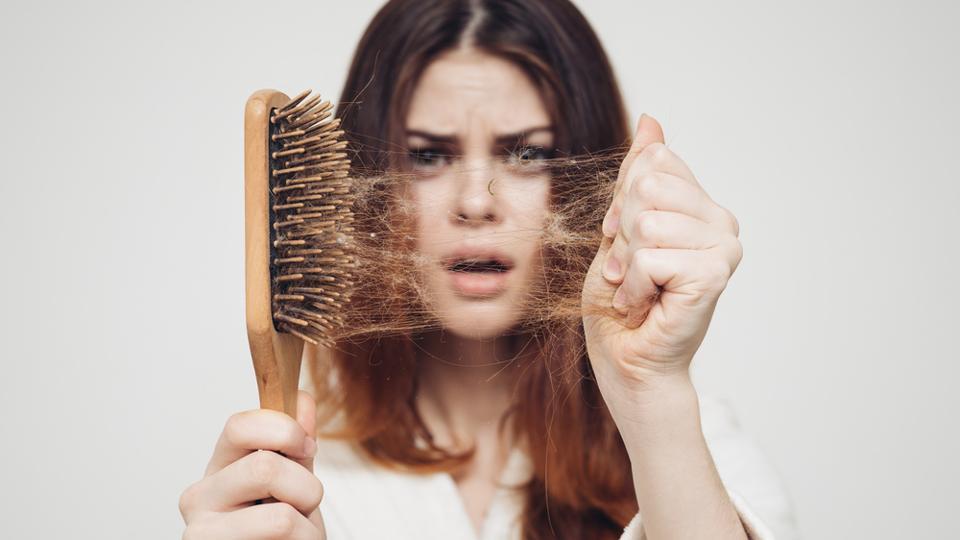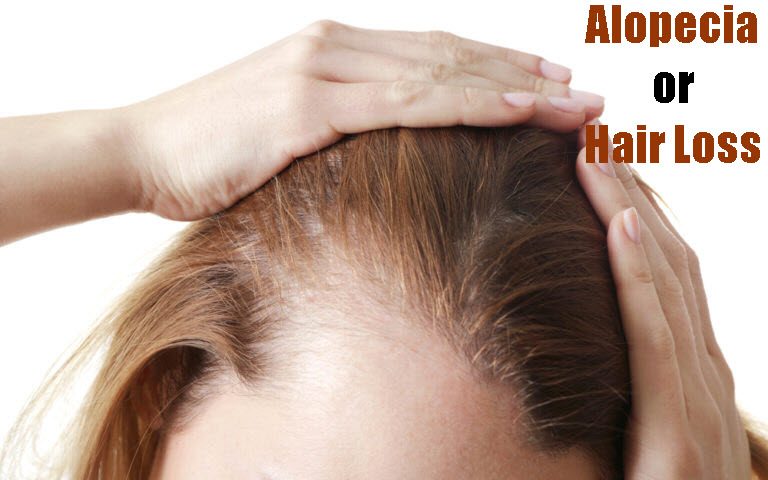This discussion includes the following information related to Alopecia:
- Alopecia or Hair Loss
- Signs and Symptoms of Alopecia
- Causes of Alopecia
- Risk Factors for Alopecia
- Tests and Diagnosis for Alopecia
- Treatment and Drugs for Alopecia
Alopecia Definition

Alopecia in common words known as Hair Loss.
Hair loss can affect just your scalp or your entire body. It can be the result of heredity, hormonal changes, medical conditions or medications. Anyone — men, women and children — can experience hair loss.
Baldness typically refers to excessive hair loss from your scalp. Hereditary hair loss with age is the most common cause of baldness. Some people prefer to let their baldness run its course untreated and unhidden. Others may cover it up with hairstyles, makeup, hats or scarves. And still others choose one of the treatments available to prevent further hair loss and to restore growth.
Before pursuing hair loss treatment, talk with your doctor about the cause of the hair loss and the best treatment options.
Signs and Symptoms of Alopecia

Hair loss can appear in many different ways, depending on what’s causing it. It can come on suddenly or gradually and affect just your scalp or your whole body. Some types of hair loss are temporary, and others are permanent.
Signs and symptoms of hair loss may include:
- Gradual thinning on top of head: This is the most common type of hair loss, affecting both men and women as they age. In men, hair often begins to recede from the forehead in a line that resembles the letter M. Women typically retain the hairline on the forehead but have a broadening of the part in their hair.
- Circular or patchy bald spots: Some people experience smooth, coin-sized bald spots. This type of hair loss usually affects just the scalp, but it sometimes also occurs in beards or eyebrows. In some cases, your skin may become itchy or painful before the hair falls out.
- Sudden loosening of hair: A physical or emotional shock can cause hair to loosen. Handfuls of hair may come out when combing or washing your hair or even after gentle tugging. This type of hair loss usually causes overall hair thinning and not bald patches.
- Full-body hair loss: Some conditions and medical treatments, such as chemotherapy for cancer, can result in the loss of hair all over your body. The hair usually grows back.
- Patches of scaling that spread over the scalp: This is a sign of ringworm. It may be accompanied by broken hair, redness, swelling and, at times, oozing.
EMERGENCY CASE See your doctor if your child or you are distressed by hair loss and want to pursue treatment. Also talk to your doctor if you notice sudden or patchy hair loss or more than usual hair loss when combing or washing your or your child’s hair. Sudden hair loss can signal an underlying medical condition that requires treatment.
Causes of Alopecia

Most people normally shed 50 to 100 hairs a day. This usually doesn’t cause noticeable thinning of scalp hair because new hair is growing in at the same time. Hair loss occurs when this cycle of hair growth and shedding is disrupted or when the hair follicle is destroyed and replaced with scar tissue.
The exact cause of hair loss may not be fully understood, but it’s usually related to one or more of the following factors:
- Family history (heredity)
- Hormonal changes
- Medical conditions
- Medications
Family History (Heredity)
The most common cause of hair loss is a hereditary condition called male-pattern baldness or female-pattern baldness. It usually occurs gradually and in predictable patterns — a receding hairline and bald spots in men and thinning hair in women.
Heredity also affects the age at which you begin to lose hair, the rate of hair loss and the extent of baldness. Pattern baldness is most common in men and can begin as early as puberty. This type of hair loss may involve both hair thinning and miniaturization (hair becomes soft, fine and short).
Hormonal Changes and Medical Conditions
A variety of conditions can cause hair loss, including:
Hormonal changes: Hormonal changes and imbalances can cause temporary hair loss. This could be due to pregnancy, childbirth or the onset of menopause. Hormone levels are also affected by the thyroid gland, so thyroid problems may cause hair loss.
Patchy hair loss: This type of nonscarring hair loss is called alopecia areata (al-o-PEE-she-uh ar-e-A-tuh). It occurs when the body’s immune system attacks hair follicles — causing sudden hair loss that leaves smooth, roundish bald patches on the skin.
Scalp infections: Infections, such as ringworm, can invade the hair and skin of your scalp, leading to scaly patches and hair loss. Once infections are treated, hair generally grows back.
Other skin disorders: Diseases that cause scarring alopecia may result in permanent loss at the scarred areas. These conditions include lichen planus, some types of lupus and sarcoidosis.
Hair-pulling disorder: This condition, also called trichotillomania (trik-o-til-o-MAY-nee-uh), causes people to have an irresistible urge to pull out their hair, whether it’s from the scalp, the eyebrows or other areas of the body.
Medications
Hair loss can be caused by drugs used for cancer, arthritis, depression, heart problems, high blood pressure and birth control. Intake of too much vitamin A may cause hair loss as well.
Other Causes of Hair Loss
Hair loss can also result from:
Radiation therapy to the head: The hair may not grow back the same as it was before.
A trigger event: Many people experience a general thinning of hair several months after a physical or emotional shock. This type of hair loss is temporary. Examples of trigger events include sudden or excessive weight loss, a high fever, surgery, or a death in the family.
Certain hairstyles and treatments: Excessive hairstyling or hairstyles that pull your hair tight, such as pigtails or cornrows, can cause traction alopecia. Hot oil hair treatments and permanents can cause inflammation of hair follicles that leads to hair loss. If scarring occurs, hair loss could be permanent.



